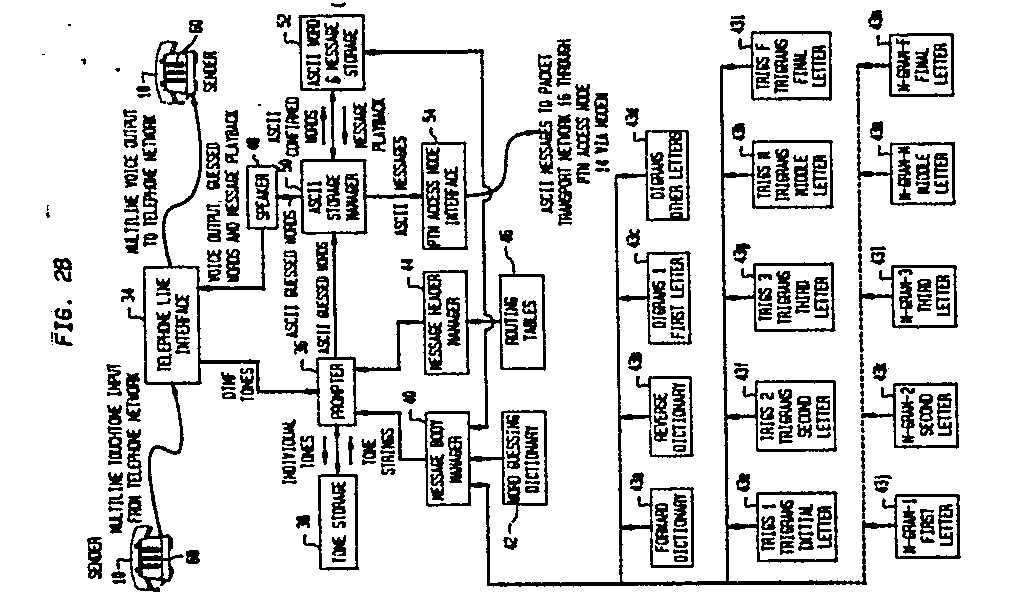(57) The identity of a word entered on DTMF (Dual Tone Multi-Frequency) pushbuttons is
determined by identifying letters according to their frequency in groups of 2s and
3s and up to n-letter groups. Initially, a sender will type a word on a DTMF pushbutton
pad. Since each button represents three (3) possible letters, or four in the case
of 7 (PQRS) and 9 (WXYZ), the system will look up the possible meanings for the word
from an internal memory which includes a dictionary. If the word does not exist in
the dictionary, then the system will search against a Forward and a Reverse Dictionary
to guess at the identity of fragments from the beginning and ending of the word. Then
it will guess the identity of each letter according to its relative frequency in groups
of 3s known as Trigrams, or in groups of 2s known as Digrams. The Trigrams are preferably
arranged in five (5) files to identify the first, second, third and final letters
of a word as well as any non-specified middle location. The system can be extended
to any letter grouping of size n where n is two or more. Once identified, the word
is stored as part of a message and then transmitted as ASCII digital information over
a packet data network to a remote receiver where digital to voice synthesis converts
the message into audio. According to a simplified alternative embodiment, the words
are guessed not letter-by-letter but word-by-word from a data bank in which words
are stored according to the length, numeric equivalent and relative frequency. Other
delivery methods include alphanumeric pagers, FAX, E-Mail, telex, computer printed
output, telegrams and cables.
|

|
